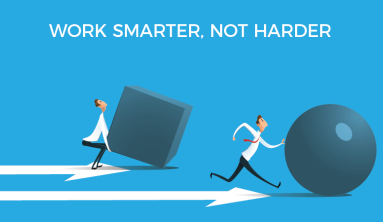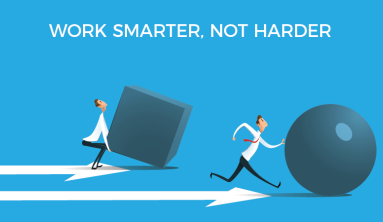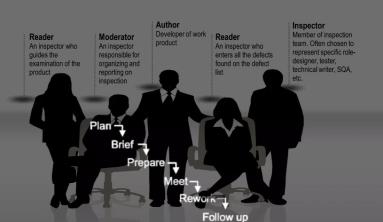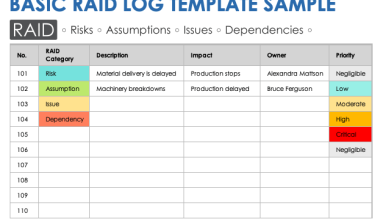I’m a very laissez faire manager. Sometimes too much.
I’m never going to fight against my dominant style. It wouldn’t work and I’d hate my life. But I have learned to watch out for and try to curb the excesses.
I look for great talent and let them fly. When I trust someone, I take their word and let them work. This is good 90% of the time. But the 10% can be disproportionately costly. Many times, I’ve paid a steep price for letting someone do their thing without really checking their work or process in detail, only to find out when the outcome was a major problem. When they’d say, “Yep, this project is on track” I’d just be happy they were on it and I didn’t need to get involved. But I did need to get involved. Just a bit of steering early in the process can have a huge impact on the outcome.
But if I operate from a place of panic, distrust, or micromanagement, nobody wins. So how to make the call?
Here’s a simple decision matrix I use:
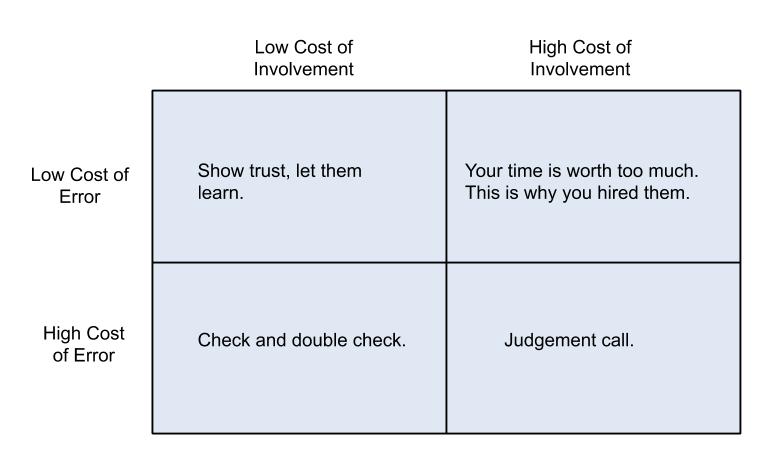
It’s pretty simple.
First you’ll notice that when the cost of failure is low, I opt to keep a light touch, even if the cost of getting involved would also be low. To me, there’s no point in hiring someone if I am going to spend time on low risk activities in their aegis. The difficult tasks aren’t the most important ones to hand off, the low risk ones are. The more of my decisions are higher risk, the better I’m using my time.
That’s pretty standard. For the bottom row of the matrix, I used to default to no involvement in both cases. I would wait until someone told me something was wrong or asked for help to get involved. That was often too late.
Many managers get involved when the stakes are high every time. I still stubbornly refuse to go that far. When it takes a lot of time and resources for me to get involved or monitor things in detail, I want to think through very carefully whether to be in the weeds. I want to give people a chance to make some higher stakes decisions without me micromanaging or micro-monitoring. That’s how you see what you’ve got and watch people rise to the occasion or not. But this cannot be a quick default position. This is a soft default. It requires case by case thinking, and I can’t let myself off the hook too easy. If my main motivation for being hands off is because I think it best for the employee or company, it’s probably good to stay light. If my main motivation is because I don’t want to get involved out of laziness or boredom, it probably means I should.
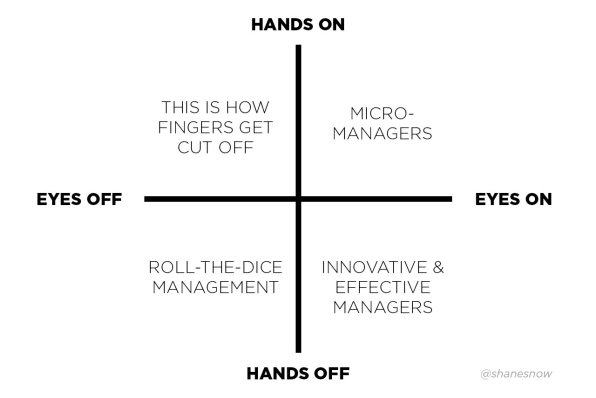
The low cost of involvement high cost of error quadrant is one that requires no thought. I get all up in that business every time. I didn’t used to. I used to waste a lot of mental resources treating this as a judgement call too. But the cost of thinking about it normally outweighs the cost of just bucking up and being a hands on manager anyway, so I’ve tried to remove all thinking from this one and just do it every time.
This matrix represents my approximate ideal. It’s subject to change, and I do not always stick to it even though I think I should. I have learned I’m not a very good or wise manager (unless it’s for people who don’t need to be managed:-), so I have to employ a few heuristics like this to make it easier on myself and stay disciplined.


